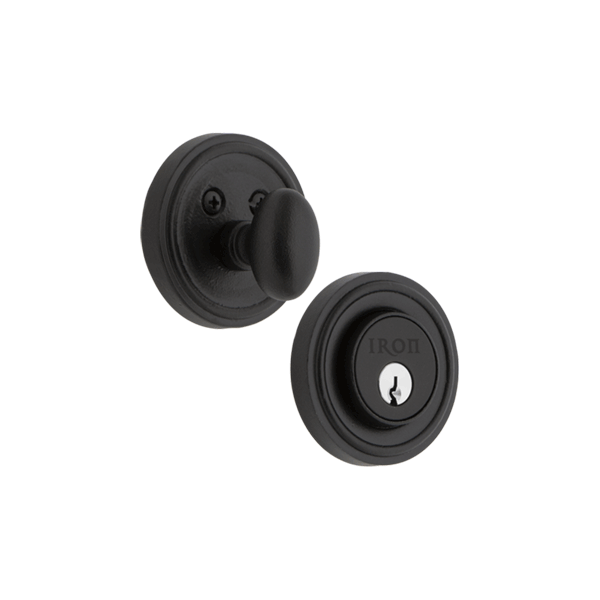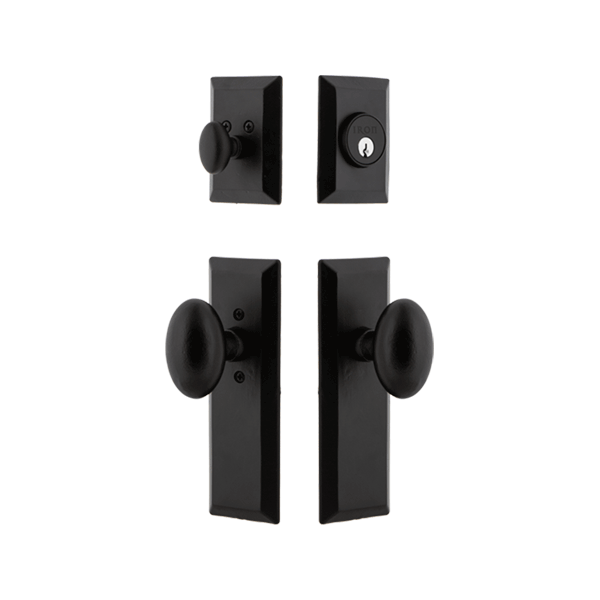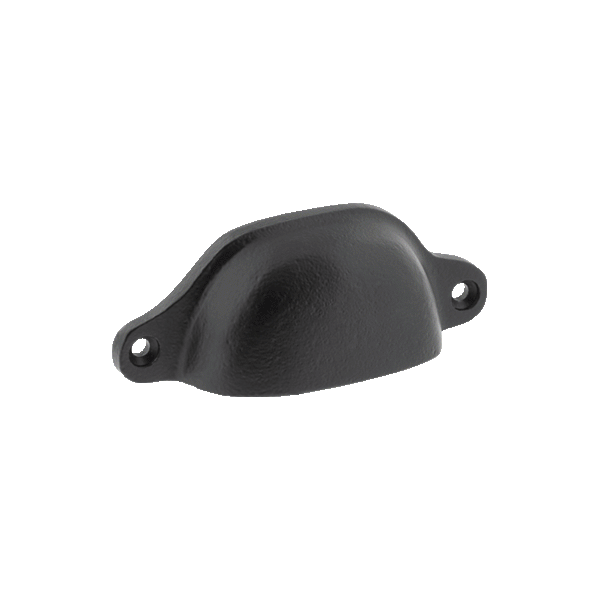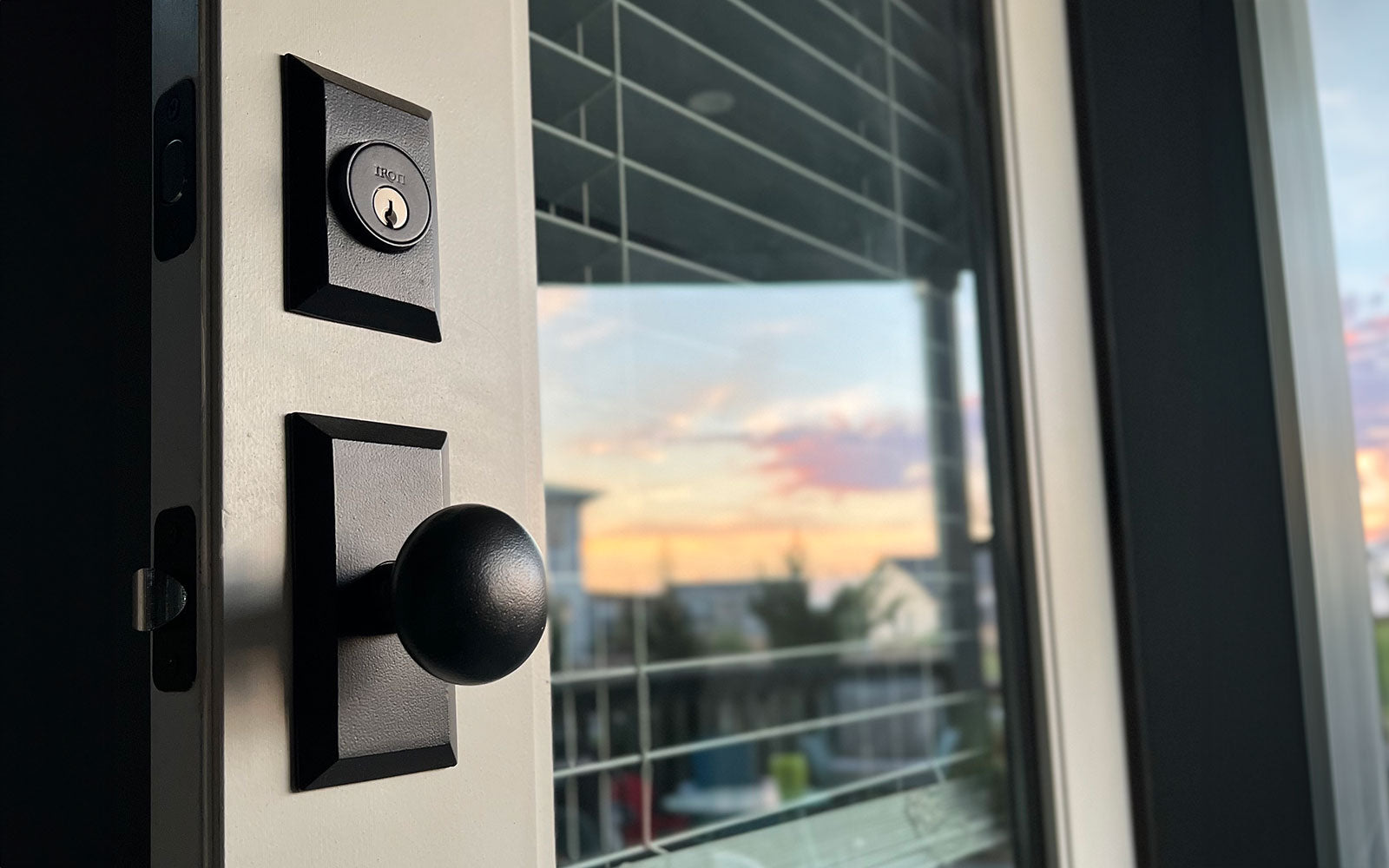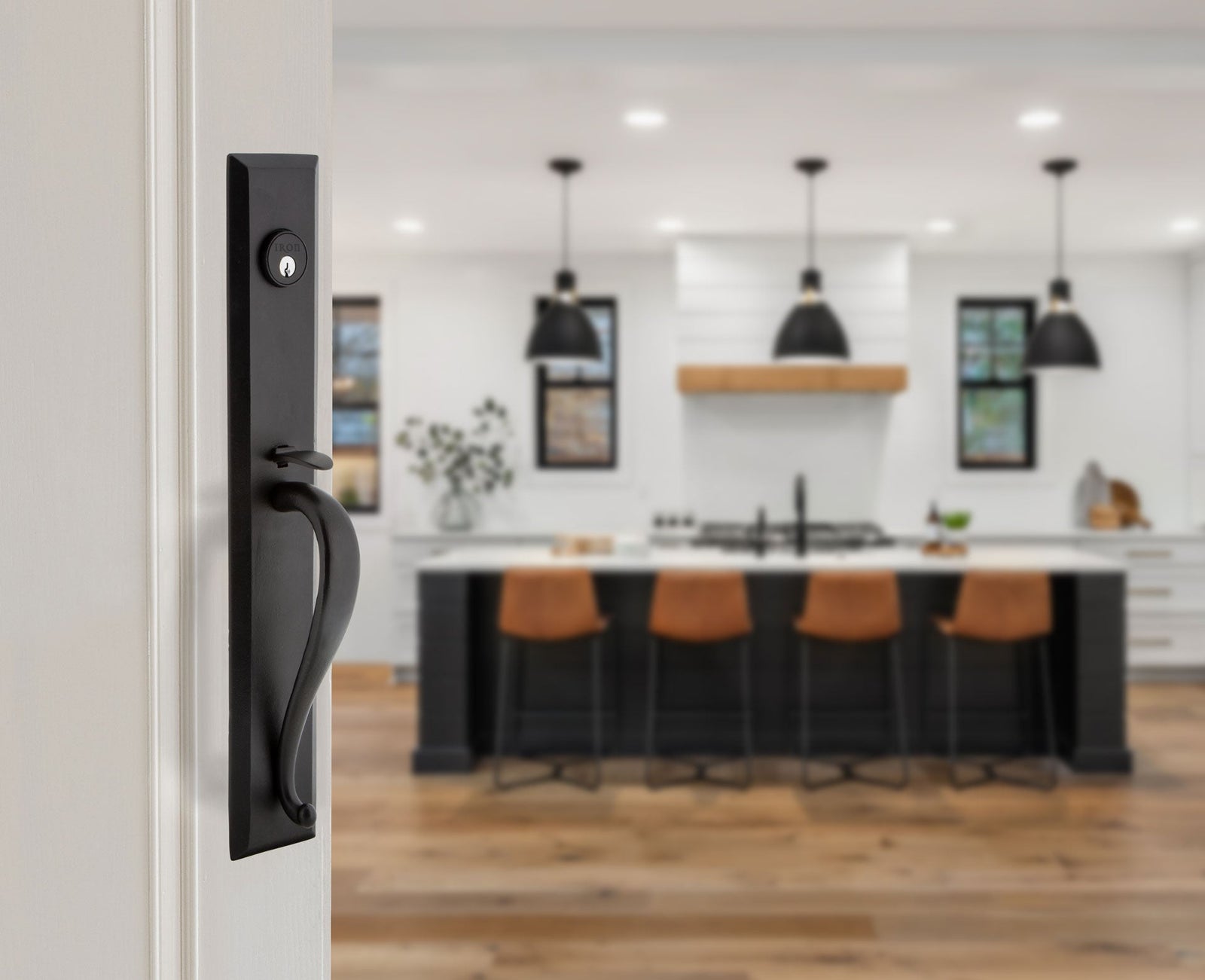
Purchasing new door hardware is exciting and requires specific dimensions to ensure the correct fit and proper working order. Some measurements to know when adding new hardware include door thickness and backset size. Door function and handing are other essential details to be aware of. Let's break it all down so you can purchase correctly fitting door hardware for your home.
Types of Door Functions
Interior Door Functions

Passage
- Turns and operates a latch but does not lock.
- Used for doors that do not need to lock or combined with a deadbolt, such as closets, pantries, hallway doors, and more.
- The knob is always unlocked.

Privacy
- Active latch with a locking mechanism.
- A privacy pin provides locking through the rosette or plate.
- Ideal for bathrooms, bedrooms, or rooms where the door needs to lock.
- Can be opened from outside with a release key.

Double Dummy
- Two non-functioning knobs and plates, with no lock or latch.
- Used on both sides of a door.
- Ideal for closet doors and typically used with roller catch, flush bolts, or surface bolts.
- Surface-mounted or thru-bolted to the door.

Single Dummy
- A non-functioning door set with no latch or locking mechanism.
- Used on one side of the door.
- Ideal for closet doors and typically used with roller catch, flush bolts, or surface bolts.
- Surface-mounted to the door.
Exterior Door Functions

Single Cylinder Deadbolt
- A manually operated deadbolt for an exterior door with a keyed cylinder on the exterior and thumb turn on the interior.

Entry Handleset with Single Cylinder Deadbolt
- Combines a passage latch and a single cylinder deadbolt.
- Can be either a One-Piece Handleset or an Entry Set made up of a separate deadbolt and passage set.
- A One-Piece Handleset has an active exterior thumb-operated latch and grip, and knob or lever on the interior.

Determining Backset Size and Door Thickness
When ordering door hardware, it is essential to know what will work with your door. If you have a new door, you may need to create a bore hole. If you are replacing the hardware on an existing door, be sure to measure to determine which backset size will work with your door. Additionally, you will want to measure the thickness of the door to make sure the hardware fits.
Backset
To determine the correct backset measurement for your door, measure the distance from the door's edge to the center of your bore hole. Two common backset measurements are 2 3/4" and 2 3/8". Ageless Iron's standard size is 2 3/8", but we also carry the 2 3/4" option.


Door Thickness
The distance from the inside edge to the outside edge of a door is the door thickness measurement. The industry standard for modern front doors is 1-3/4". Many interior doors measure 1-3/8" thick.
Our interior hardware sets work with standard door thicknesses between 1-3/8" to 1-3/4" thick. Entry sets with a deadbolt work on doors with thicknesses from 1-3/4" to 2" thick.
Door Handing
Handing refers to the way a door opens and is determined by the hinge locations. To determine door handing, first, decide what the inside versus the outside of the door is.
Outside of a Door
The side of the door where you gain access to a room, or the side of a door that faces away from a room. For a bedroom door, the outside would face the hallway.
Inside of a Door
The side of a door that faces the room. For a bedroom door, the inside of the door faces the bedroom.
Hinge Locations
Per the drawings below, when viewed from the outside of the door, hinges located on the right side mean the door is a Right-Hand door. On the contrary, hinges located on the left side indicate the door is a Left-Hand door.


When is handing required?
It is usually a good idea to determine door handing before ordering locks and door hardware. This is especially true for sets with levers and privacy locks.



